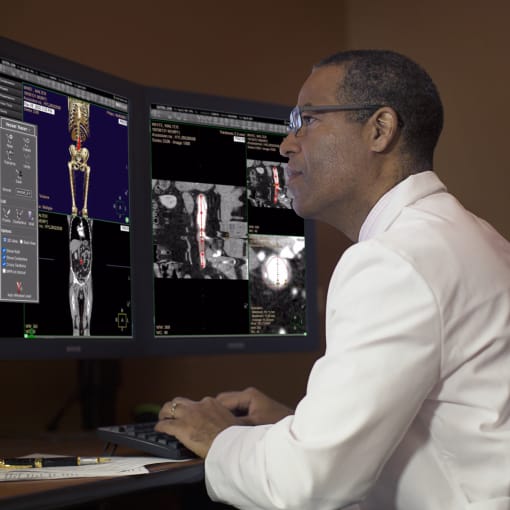Overcoming the PACS cost conundrum
Implementing a vendor neutral archive (VNA) can be a great first step to lowering this overall spend and move the HDO beyond a PACS-only approach to medical imaging.

Harness the power of a unified content, process and application intelligence platform to unlock the value of enterprise content.
Learn more
Automate your document-centric processes with AI-powered document capture, separation, classification, extraction and enrichment.
Learn about Hyland IDPIt's your unique digital evolution … but you don't have to face it alone. We understand the landscape of your industry and the unique needs of the people you serve.
 Overview of industries
Overview of industries
Countless teams and departments have transformed the way they work in accounting, HR, legal and more with Hyland solutions.
 Overview of departments
Overview of departments
We are committed to helping you maximize your technology investment so you can best serve your customers.
 Overview of services
Overview of services

Discover why Hyland is trusted by thousands of organizations worldwide.
Hear from our customers
Our exclusive partner programs combine our strengths with yours to create better experiences through content services.
Overview of partners
Join The Shift newsletter for the latest strategies and expert tips from industry leaders. Discover actionable steps to stay innovative.
Register now
Hyland connects your content and systems so you can forge stronger connections with the people who matter most.
Learn about HylandWith our modern, open and cloud-native platforms, you can build strong connections and keep evolving.
 Dig deeper
Dig deeper
Imagine you’re about to go on a fantastic vacation, and you find a terrific new camera that takes great pictures. But to use it, you must buy the manufacturer’s software. Oh, and, by the way, to store those pictures, you need to buy different software. Want to share those pictures with your family and friends? More software.
Now, if your friends want to view them, well … you know how the story goes.
While you wouldn’t tolerate this scenario in retail, it frequently happens in the healthcare industry. Proprietary clinical IT systems such as picture archiving and communications systems (PACS) have healthcare organizations locked into single imaging solutions that can make image storage and management, as well as sharing images within and outside the enterprise, extremely complicated and costly.
PACS systems are known for driving high-cost data and image migrations. Simply adding a new storage platform can add significant cost for proprietary migrations of imaging data to the platform.
Meanwhile, storage platforms can be a very disruptive technology, often resulting in upgrades every four to six years to meet increasing system demands and overcome costly storage maintenance that can result from legacy platforms. From higher exam volumes and increasing images-per-exam to new storage systems and upgrades, reinvesting in PACS is required to maintain the necessary quality and efficiency.
However, upgrading these storage solutions can be expensive, and maintaining traditional proprietary PACS adds to this cost.
Data migration is also needed as PACS become outdated, require upgrades or need replacement, which can be a costly, time-consuming process from both a financial and resource standpoint. For example, the radiology department tends to change or modify PACS about every four to six years. This traditional archive strategy, including conversion, migration and project management, can cost organizations millions to maintain.
However, healthcare delivery organizations (HDOs) such as The Children’s Hospital of Philadelphia, have reported a savings of nearly $3 million over five years.
To address the PACS software cost conundrum, HDOs must shift from departmental views of medical images to an enterprise storage archive that delivers a unified view of all medical images without a need for traditional PACS. Implementing a vendor neutral archive (VNA) can be a great first step to lowering this overall spend and move the HDO beyond a PACS-only approach to medical imaging.
Before healthcare reform, it was easy to justify a $5 million or more spend on a new PACS system for a department that was responsible for a third of the HDO’s incoming revenue. Today, however, with the shift to value-based reimbursement models and bundled payments, the focus on HDO departments as revenue centers is changing. Increasingly, radiology departments have to compete for internal capital and operating costs as true cost centers.
These changes in reimbursement demonstrate how HDO leaders are under increasing pressure to find more efficient ways to deliver imaging solutions that maintain quality and efficiency, meet new reporting requirements and reduce operating expenses.
A true VNA is a mature technology that healthcare organizations can install either in conjunction with traditional PACS or, increasingly, in front of, or as a replacement to, legacy PACS to improve access and significantly reduce storage and migration costs. It can eliminate vendor lock and block, improve data and imaging exchange, consolidate and centralize imaging storage and improve overall IT management.
Piedmont Healthcare also provides a good example of the type of cost savings a healthcare organization can realize. Since implementing a VNA, Piedmont has saved more than $700,000 and expects an additional $2 million in savings as the organization moves additional PACS over to the enterprise imaging model. These savings are largely the result of reduced maintenance and data migration costs.
Visualization tools also tend to be inherently proprietary, requiring fat client viewers for radiologists to be able to perform diagnostic overreads.
However, today, zero-client viewers, like Hyland’s NilRead application, can support specialty physicians requiring specific overread capabilities from a single view across the enterprise using a zero-client infrastructure. This allows for specialty physicians to be able to conduct diagnostic overreads anytime, from anywhere.
In this age of COVID-19, having the ability to deploy a zero-client solution that can support things like remote diagnostic interpretation and image study collaboration with other providers is essential.
If the HDO wants to leverage existing imaging platforms, it can utilize a standards-based visualization solution to consolidate imaging information for providers throughout the enterprise. A zero-client enterprise viewer can be a great platform upon which an HDO can begin the process of implementing an enterprise imaging strategy. It can also reduce maintenance expenses while leveraging existing systems as well as provide a more open method to support specialty physicians in performing diagnostic overread services.
Demystifying the PACS infrastructure through a visualization approach as an initial step can consolidate imaging viewing solutions as a part of an enterprise imaging strategy. And it can drive tremendous value.
An overall enterprise imaging strategy delivers numerous cost-savings benefits, while the right enterprise visualization approach can begin the process of imaging consolidation with a visualization approach. Tearing down data silos, eliminating proprietary vendor formatting, consolidating hardware and software purchases by consolidating maintenance into a single imaging archive and enterprise visualization solution avoids the costs that plague traditional PACS solutions.
Implementing a mature VNA and an enterprise visualization approach puts your HDO on the road to an enterprise imaging strategy. This helps your organization drive greater value for years to come and allows you to overcome the PACS cost conundrum.
To learn more about how the right enterprise imaging approach can help your healthcare facility drive value, improve access and realize a host of other benefits, download the whitepaper 8 reasons to reinforce PACS with enterprise imaging.
